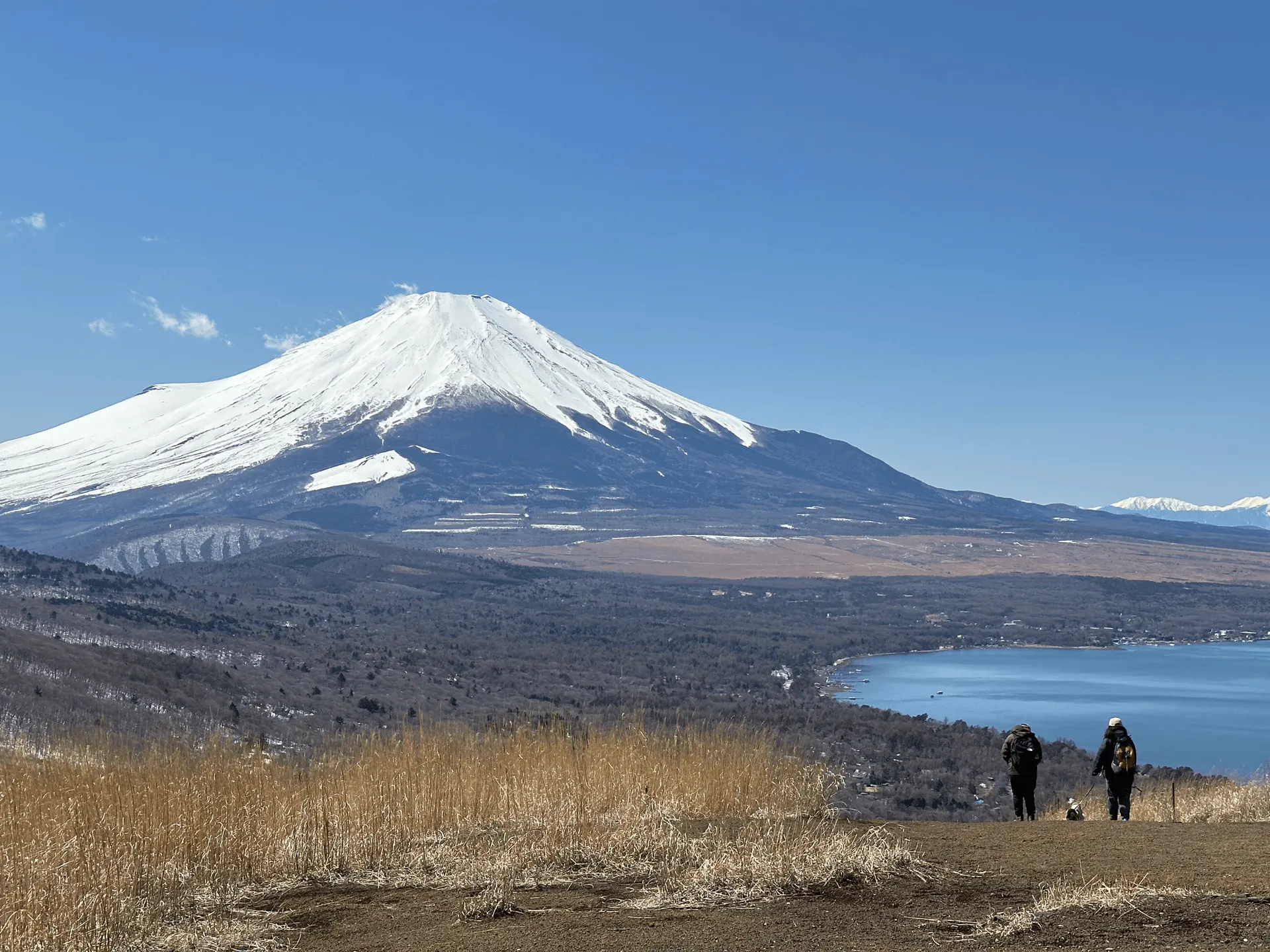
Over the past 3 years of hiking in Japan, I’ve had the pleasure of spotting Mt Fuji on numerous occasions (as well as climbing it too). I’ve compiled a list with some of my favourites in both the Fuji Five Lakes area, as well some hikes that are slightly further away, but still provide some great views, such as Tanzawa and Mt Daibosatsu.
I find that setting out on a hike with the expectations of meeting Mt Fuji can be a bit of a gamble. Sometimes that promise of a Fuji view ends up with a feeling of disappointment when the peak is obscured by some pesky clouds. Other times, I wasn’t planning on seeing Mt Fuji at all, and it’s such an unexpected yet lovely surprise when I turn a corner or get above the treeline, and there it is. The best feeling is when Fuji is nowhere to be seen, but then the clouds miraculously part - giving you the time to snap some pictures before it disappears again.
When to see Mt Fuji
Nonetheless, if you are planning a hike with the hopes of seeing Mt Fuji, I would recommend aiming for the colder months (November - April). There’s two reasons for this:
- A lot of the mountains on this list are lower in elevation, and as Japanese summers are very hot, you don’t want to be out on the low elevation mountains around this time. Depending on where you go, there can be plenty of bugs about too. (In contrast, winter is very bug-free). After one traumatic experience in July where I got hit by spiderwebs on the trail time and time again, I’m done with hiking those low-elevation mountains!
- Your chances of seeing Mt Fuji are higher when it’s cold. You’ll have a more than 80% chance of seeing Mt Fuji in February, while you’ll only have about a 30% chance in September (source).
Japan has a lot of amazing high-elevation mountains to hike in summer, so it can be quite sad to have to say goodbye to them each year as it gets colder, but the silver lining is that this is the perfect time to get in some low-elevation hikes and spend some time with Mt Fuji.
Hiking in the Fuji Five Lakes Area
Mt Mitsutoge (Lake Kawaguchiko)

Mt Kawaguchiko is most accessible of the Fuji Five Lakes, and so the nearby Mt Mitsutoge (三ッ峠山) is at the top of my list. From Kawaguchiko station, it’s a 25 minute bus ride to the Mitsutoge trail head (三ッ峠登山口) bus stop.
The shortest course is a 5km out-and-back course starting and ending at the bus stop, which you can do in under 3 hours. If you have more time, you can keep going from peak all the way back to Kawaguchiko station, for a total 12km, 5.5 hour course.
For those wanting an even longer trail, you can also do a 15km, 8.5 hour station-to-station hike starting at Mitsutoge station and ending at Kawaguchiko station. I had the opportunity to do this in April, and got to pass a lot of beautifully flowering sakura trees that I would have otherwise missed, so it was quite a nice hike!
Mt Ishiwari (Lake Yamanakako)

Lake Yamanako is the largest of the Fuji Five Lakes, and is also the closest lake to Mt Fuji. The nearby Mt Ishiwari lets you get a great view of both the lake and Mt Fuji in the same shot. Although there’s no train station nearby, conveniently there is the option to get a highway bus directly from Shinjuku station to the trailhead, where you can do a 5 hour hiking trail up to the peak, and then back down to the lake.
⛰️ Read more: Mt Ishiwari
Mt Ryugatake (Lake Motosuko)

Mt Ryugatake is next to Lake Motosuko, the third-largest (but deepest) of the Fuji Five Lakes. Its trailhead is at the Lake Motosuko bus stop (本栖湖バス停), which is a 50 minute ride from Kawaguchiko station. From here, you have a beginner-friendly 6km loop course. But I’ll also have to make a shoutout to Mt Amagatake and Mt Kenashi, which neighbour Mt Ryugatake on either side. If you were looking for a longer hike, there’s multiple hiking options here, including a 14km, 9.5 hour course that passes all three.
Lake Motosuko also has a rather large campground, so if you’re interested in camping, you can spend the night here before setting out for your hike the next morning.
⛰️ Read more: Mt Amagatake
Mt Junigatake (Lake Saiko)
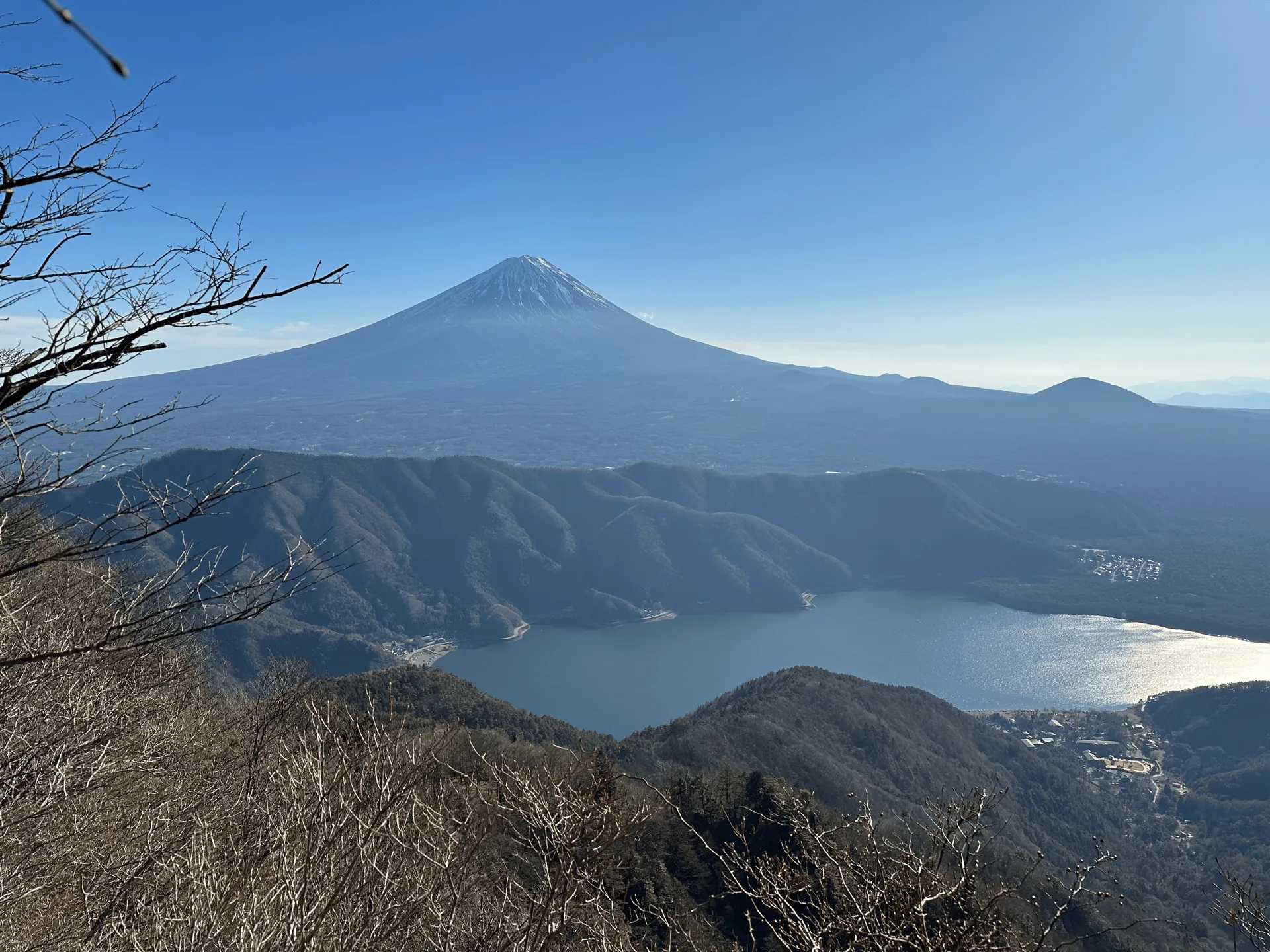
Mt Junigatake (十二ヶ岳) is not for the faint of heart, as it comes with a rather steep chain-climbing portion, but may be fun for any thrill-seeking hikers out there. I’ll have to write a proper blog post about it sometime, but we took this 7 hour course starting at the Mt Kenashi trailhead (毛無山登山口) and ending at the Mt Junigatake trailhead (十二ヶ岳登山口). Both trailheads can be accessed by bus from Kawaguchiko station.
Mt Sanpobun (Lake Shojiko)
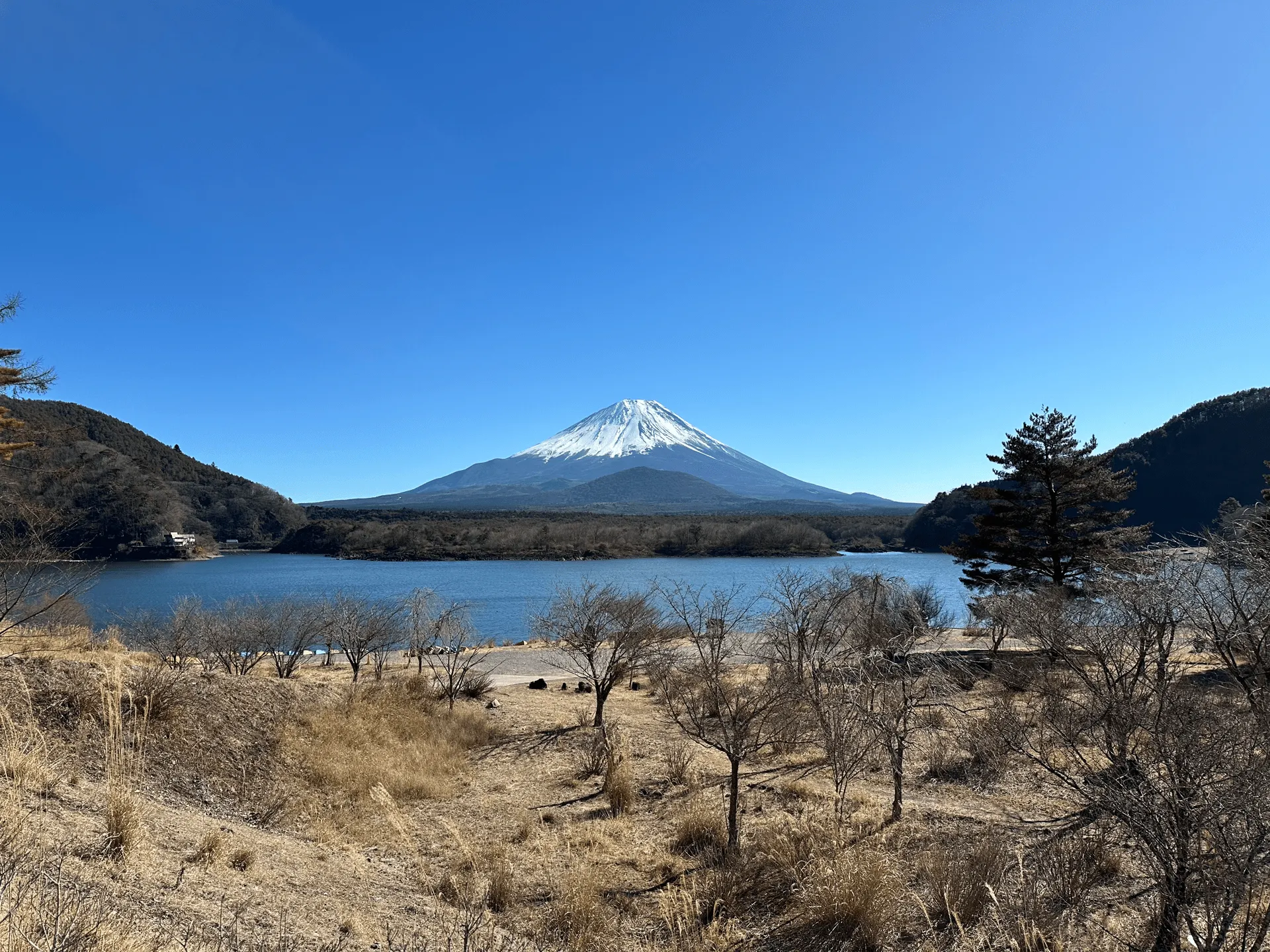
Lake Shojiko is the smallest of the Fuji Five Lakes, and is also the least-developed. So I found Mt Sanpobun to be quite nice if you want to get away from the crowded Lake Kawaguchiko! You can get Fuji views from both the trailhead and the Panorama-dai partly up the trail. I quite like how from Lake Shojiko you can see this cute little mound in front of Mt Fuji.
⛰️ Read more: Mt Sanpobun
Myojinyama (Lake Yamanakako)

You’ll notice so far I have listed one mountain for each of the five lakes, but I couldn’t help but mention Myojinyama on here as well. I wouldn’t recommend it as a proper hike, as it’s quite a short walk from the trailhead to the summit, but it came with one of my favourite views ever of Mt Fuji.
⛰️ Read more: Myojinyama
Hakone area: Mt Kintoki
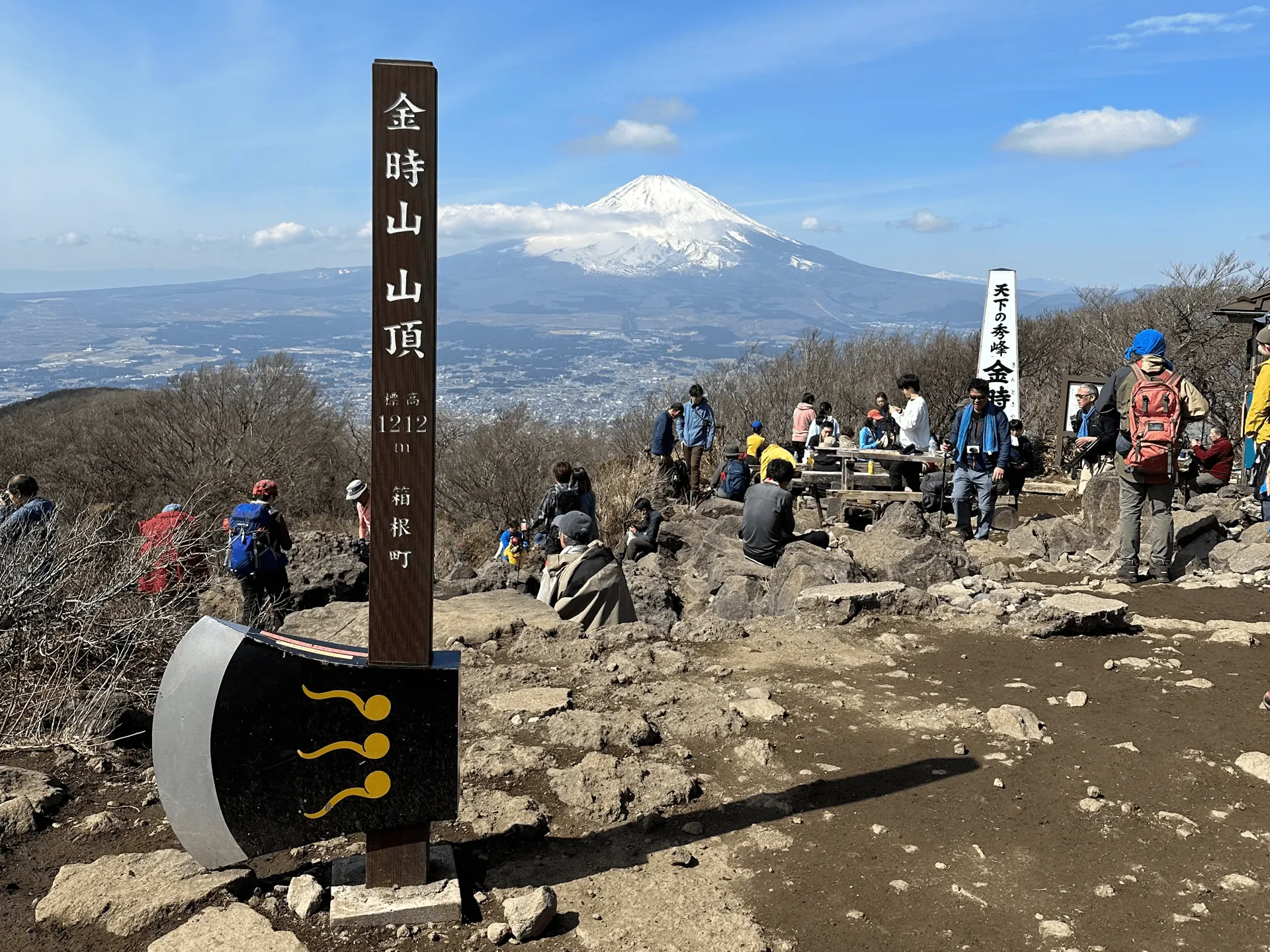
Moving out of the Fuji Five Lakes Area, another beginner-friendly mountain that is still quite close to Mt Fuji is Hakone’s Mt Kintoki. Accessible via a highway bus from Shinjuku to the Kintoki shrine trailhead (金時神社入口) the peak of Mt Kintoki has a rather large axe you can take a photo together with.
As well as the 3 hour course from the trailhead, there’s also the option to keep hiking past Mt Kintoki to the neighbouring Mt Myojingatake (明神ヶ岳) for a total 6.5hr, 11.5km course.
Hiking in the Tanzawa mountains (Kanagawa)
A little further away from Mt Fuji, the Tanzawa mountain range is my next favourite place to see Mt Fuji. I actually find that since you are on the eastern side of Mt Fuji you can get some really nice photos without any glare thanks to the sun being at your back.
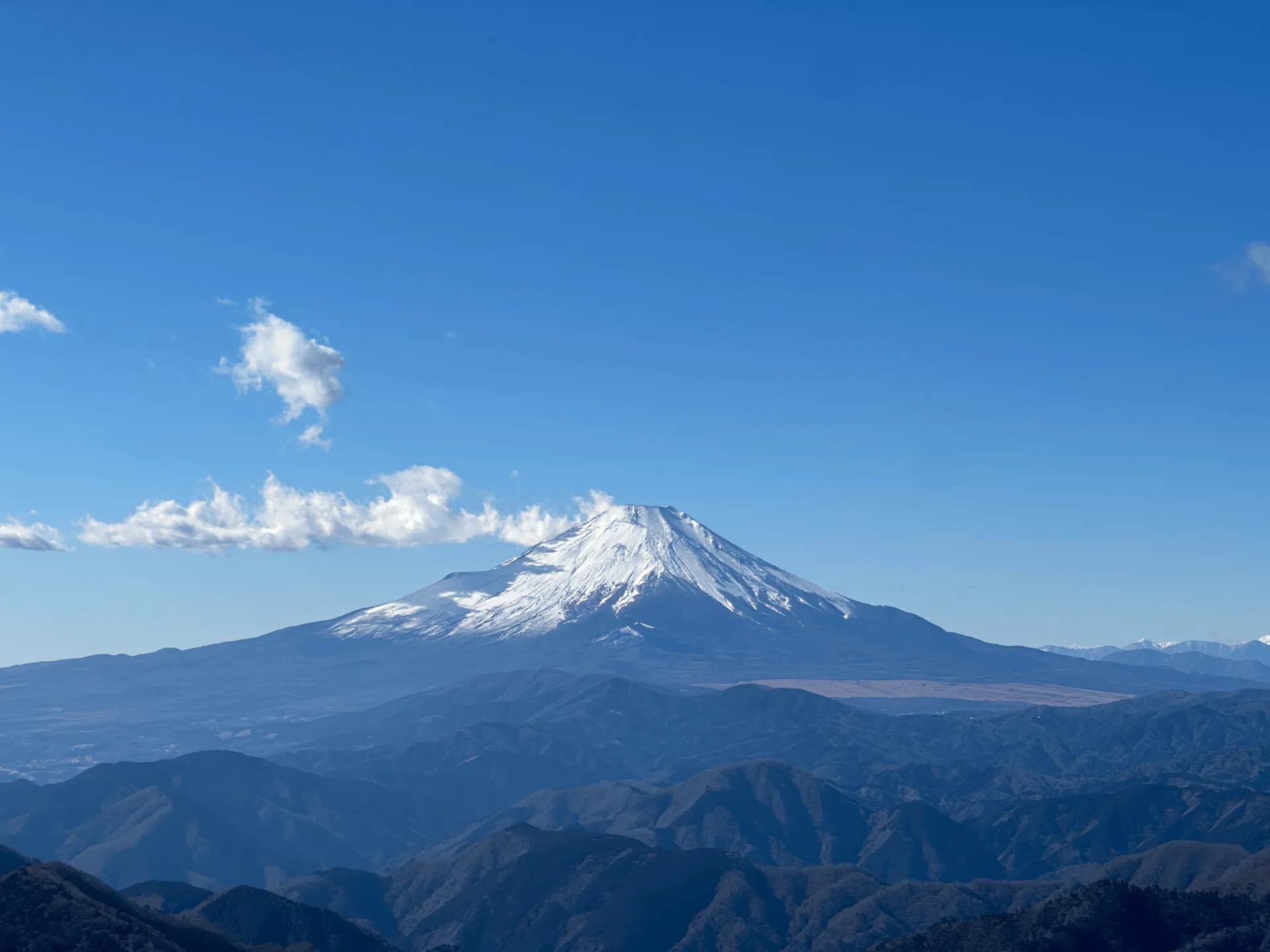
Mt Tonodake and the neighbouring Mt Tanzawa are two options I’ve written about previously, with easy bus access to the Okura trailhead. The hike to Mt Tonodake is quite long, so you’ll need some stamina, but you’ll be rewarded with great views of Mt Fuji along the way.
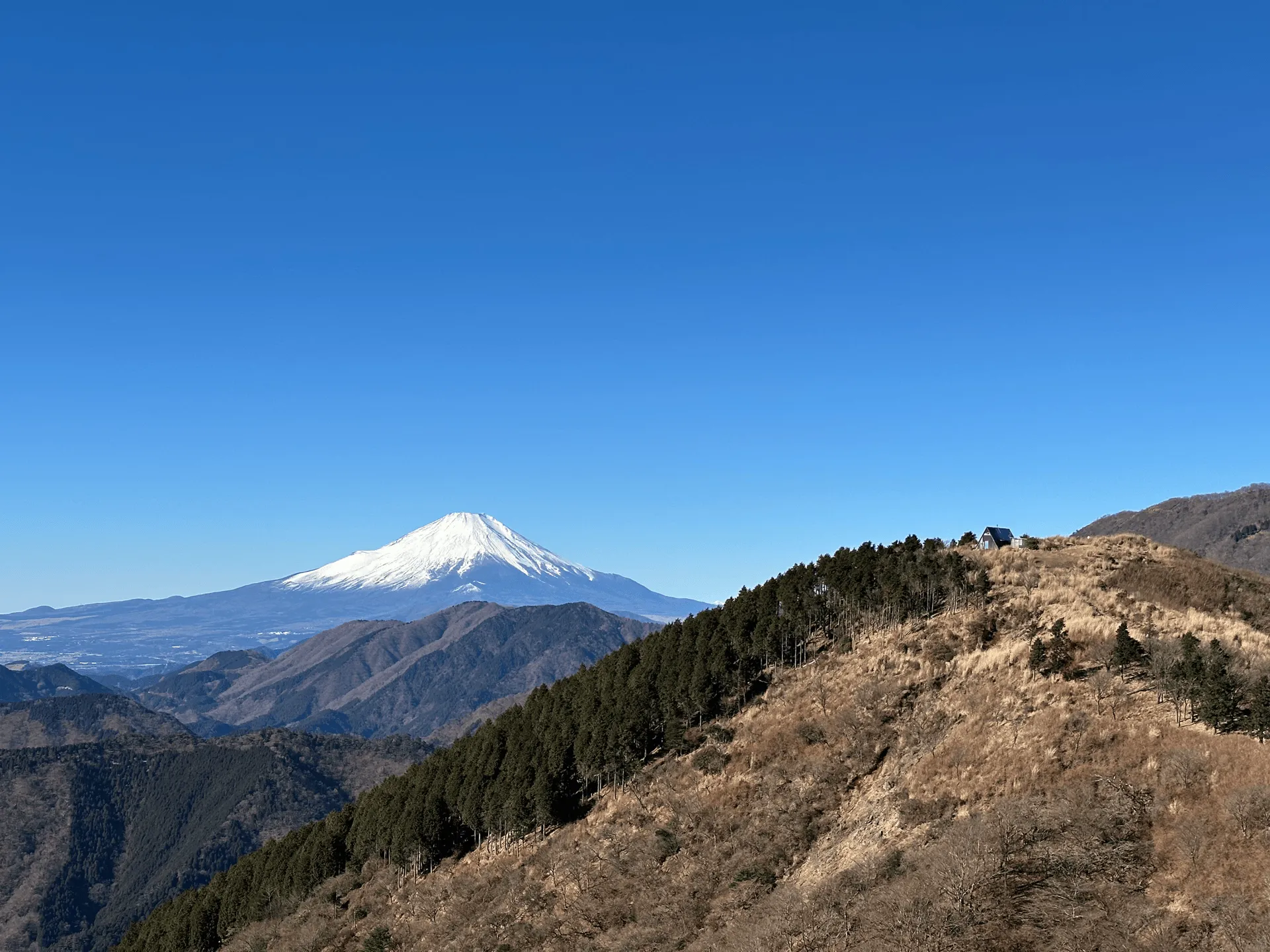
⛰️ Read more: Mt Tonodake and Mt Tanzawa
Mt Daibosatsu (Yamanashi)
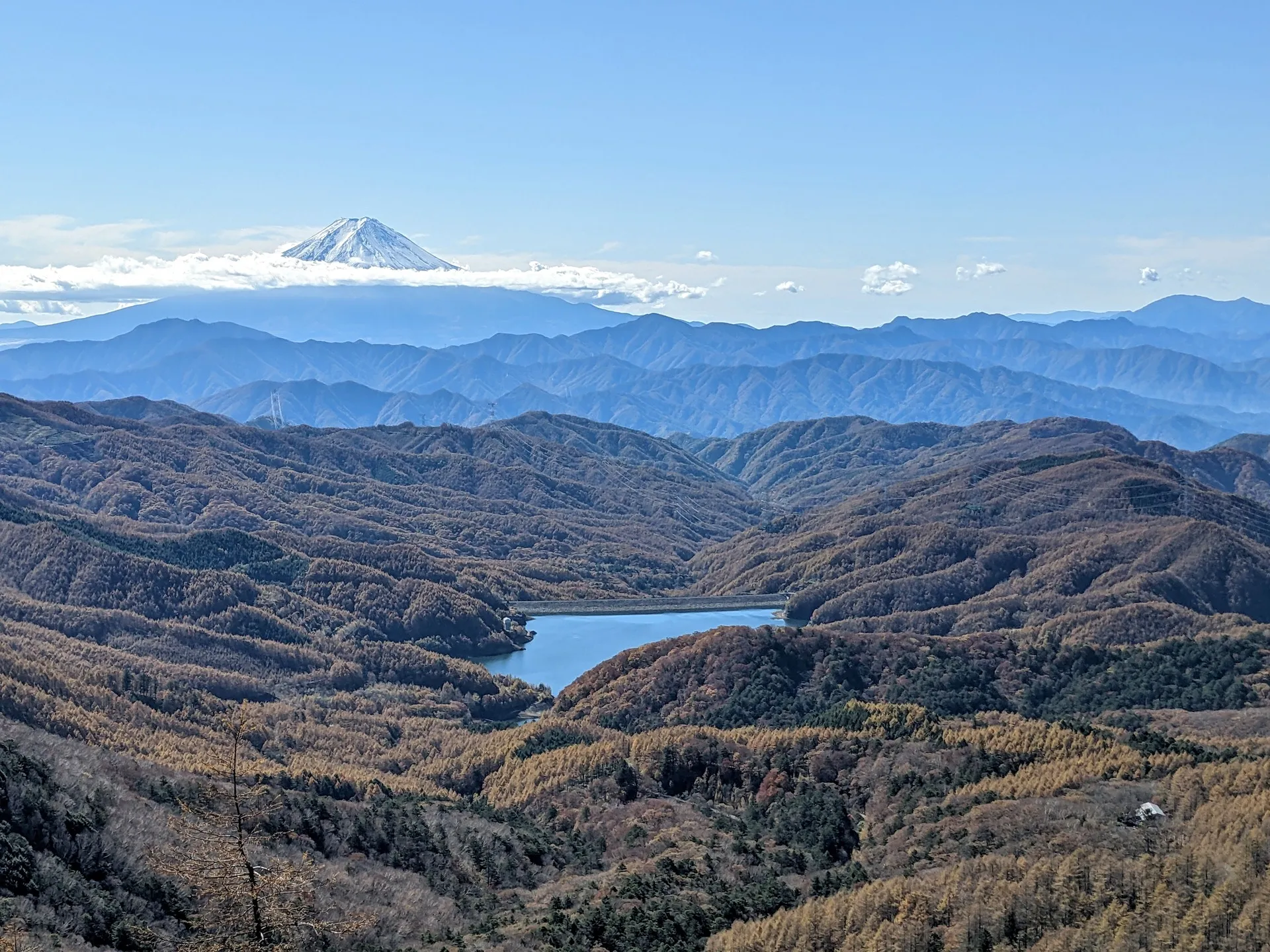
At 2056m, Mt Daibosatsu is the highest in elevation of the mountains on this list, and is quite a far bit away from Mt Fuji compared to the Five Lakes region, but I think seeing it together with the Kamihikawa dam makes for a pretty cool shot. The standard loop course is only 3 - 4 hours, so this is another beginner-friendly option with some great views.
⛰️ Read more: Mt Daibosatsu
Seeing Mt Fuji from Tokyo
You can see Mt Fuji even from Tokyo on a clear day, so two of the mountains I’ve previously mentioned in my Tokyo day hikes post are also candidates for a Fuji view, if you don’t want to get too far from Tokyo.
Mt Takao and Mt Jinba

With only an elevation of 599m, your view of Mt Fuji from Mt Takao will be slightly obscured by the mountains in front of it, but it is possible to see it on a clear day! This is probably the closest mountain to Tokyo that you can climb and still see Mt Fuji from.
You can also spot Mt Fuji from the nearby Mt Jinba if you take the Mt Jinba to Mt Takao course.
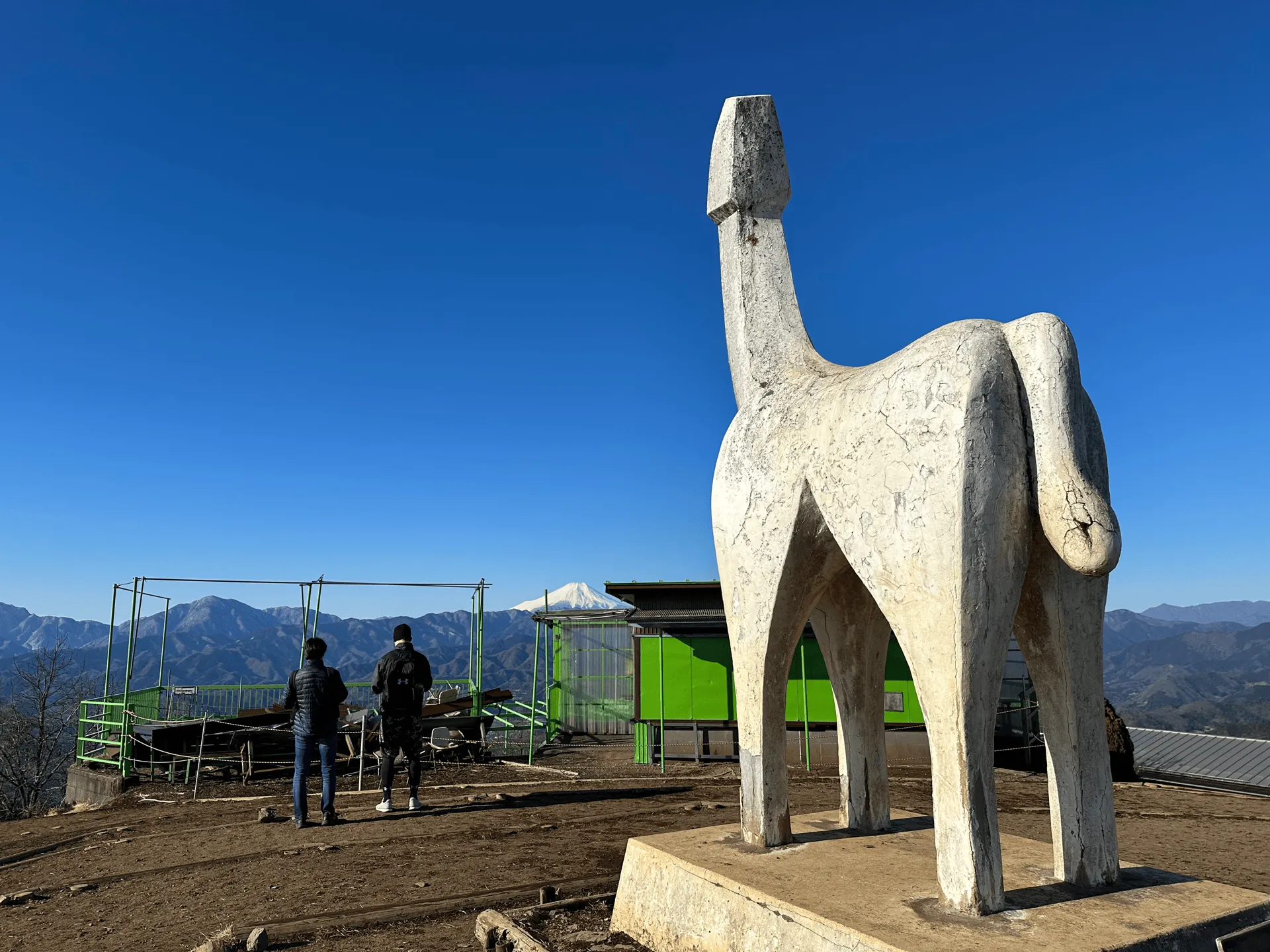
Mt Mitake and Mt Odake
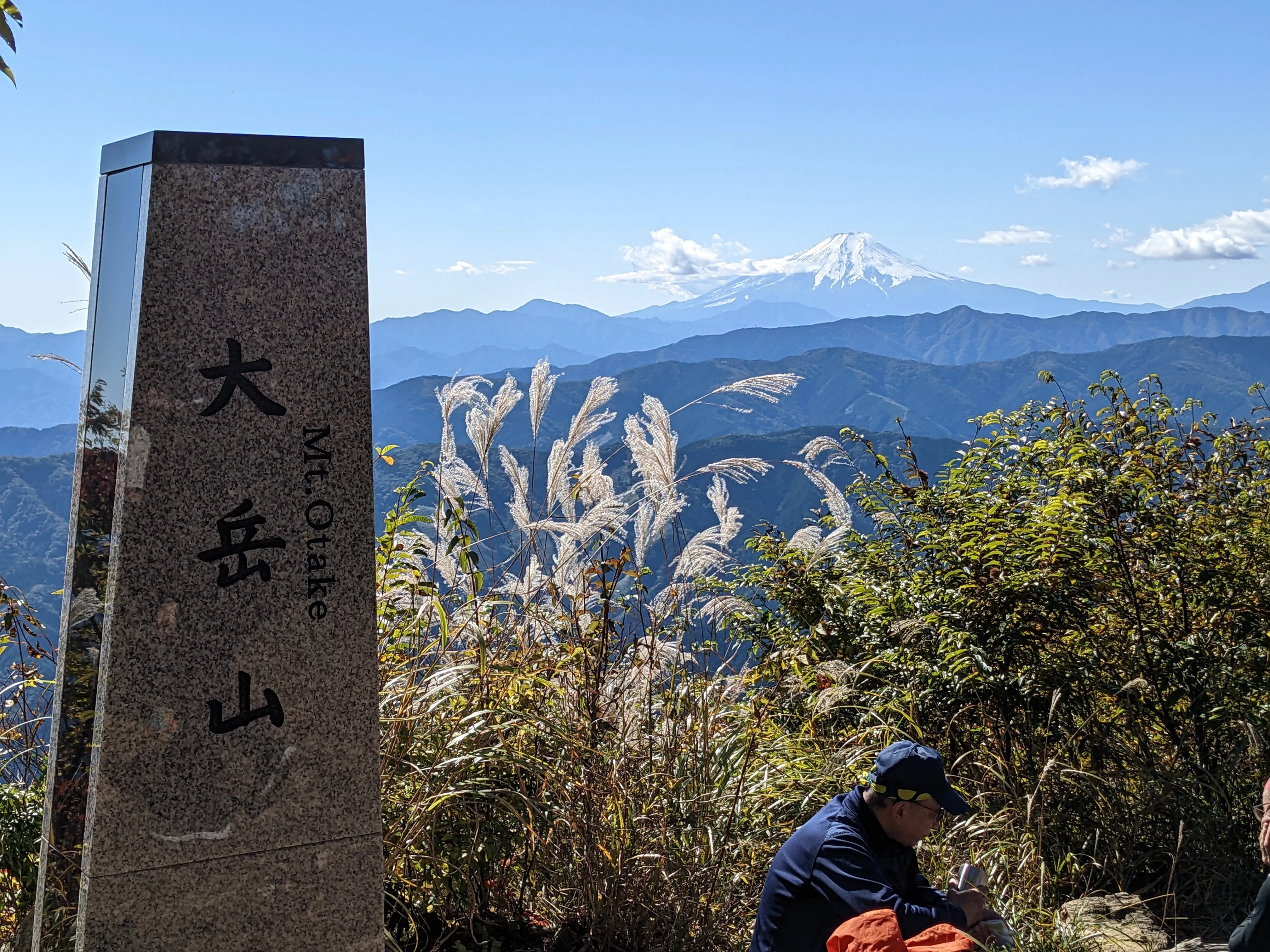
Mt Mitake has a number of hiking courses, but if you hike out to the neighbouring Mt Odake (a 9km hike) you’ll get a chance to see Mt Fuji at its summit. Public transport access is 2 hours by train from Tokyo to Mitake station on the JR Chuo line, and then a 10 minute bus trip from the station to the Mitake cablecar.
Mt Fuji’s visibility forecast
If you want to increase your odds of seeing Mt Fuji, as I mentioned at the start of the post, you’ll want to go in the colder months. There is also this “When to See Mt. Fuji?” website which provides a visbility forecast, so you can try and time your chances.
According to this source, your odds of seeing Mt Fuji are higher in the early morning, which I have found to be true - sometimes I’ll be on the train or driving to the trailhead, and spot Mt Fuji along the way, but then it completely disappears by the time I start my hike. If you spot Mt Fuji, I would recommend getting a photo of it while you can!
How far away can you see Mt Fuji?
As a final fun fact, did you know you can see Mt Fuji from far away as Gunma? I have spotted it from the peak of Mt Shibutsu - which is 175km away. Apparently you can see it from 323km away in Wakayama too which is pretty crazy.
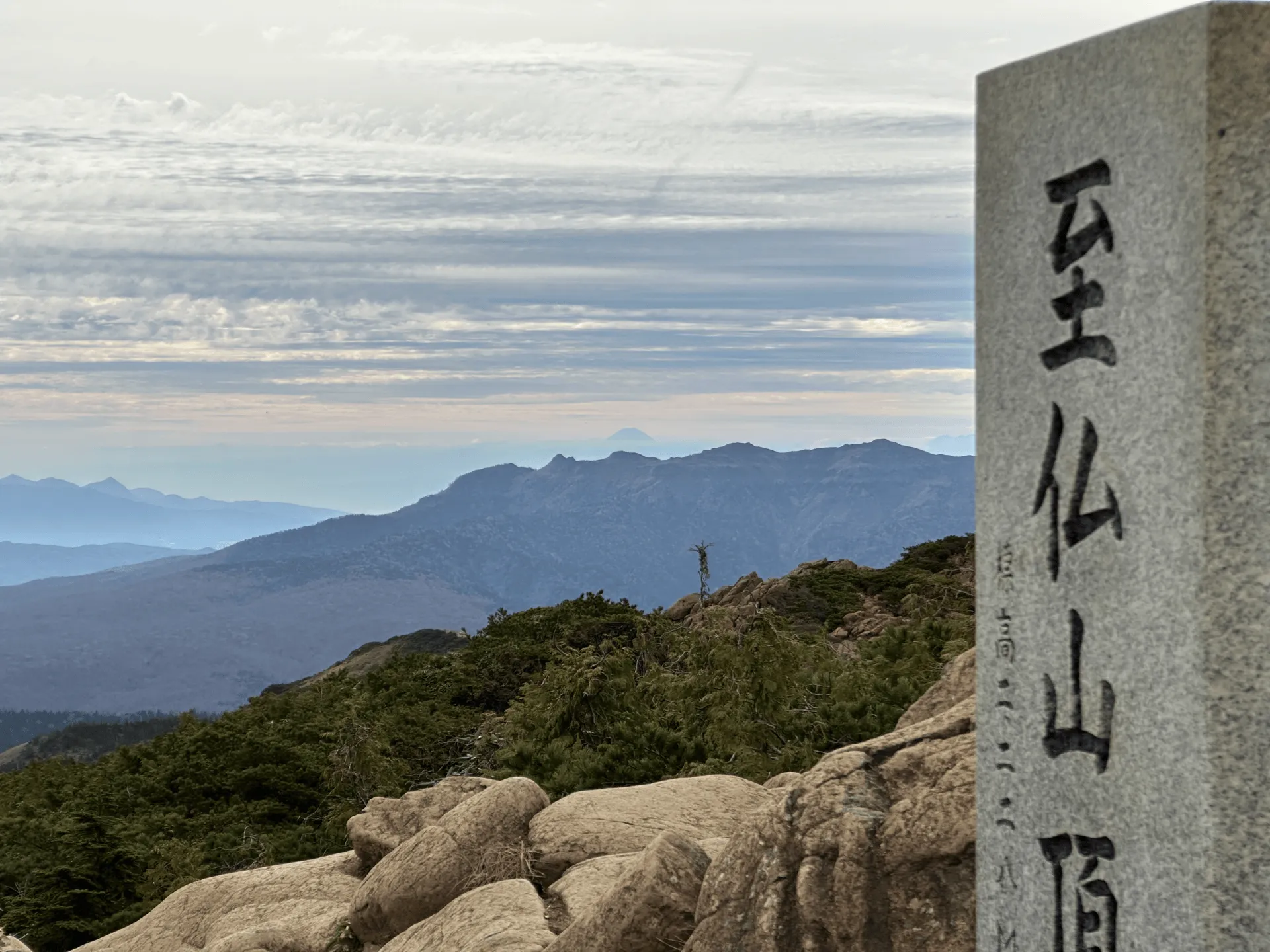

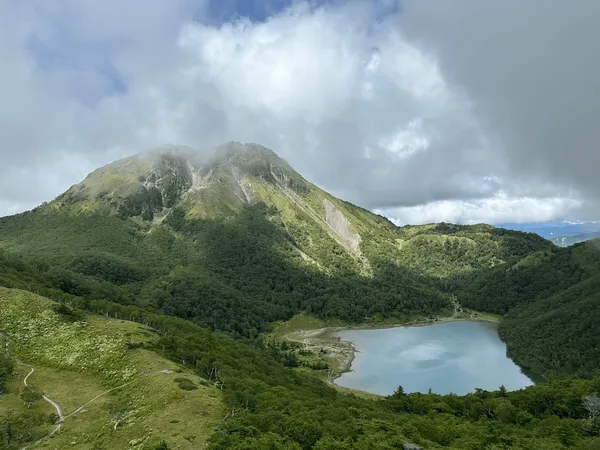
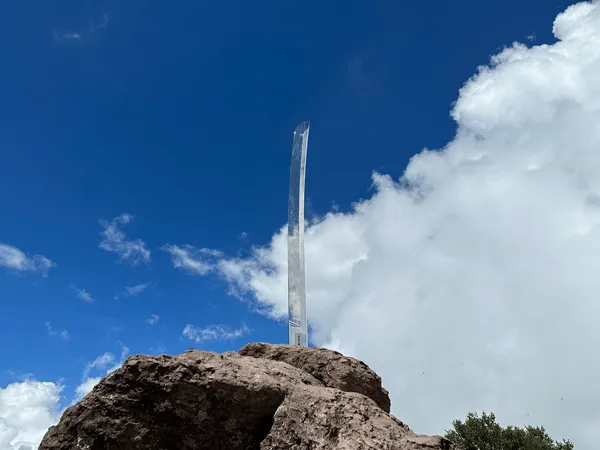
Leave a comment